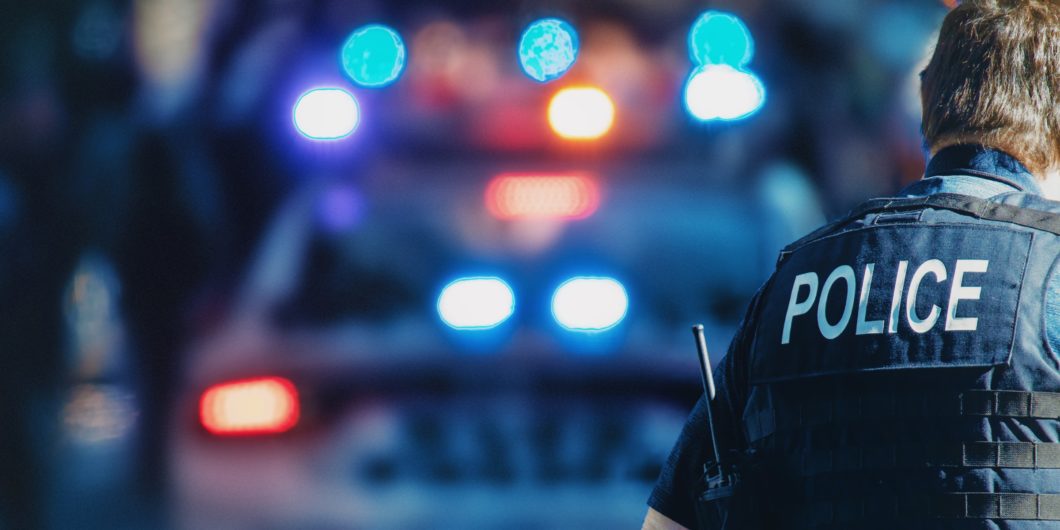We have a duty not to offend others without good reason, but we also have a duty not to be offended by others without good reason.
The Facts on Race, Crime, and Policing in America
No one could fail to be moved by the death of George Floyd, whose crime apparently was only the passing of a counterfeit $20 bill. Of course, we still do not know all of the facts, including whether Mr. Floyd resisted arrest, and if so, how. But the video revealed enough to horrify most Americans, and indeed, people all over the world.
The Floyd incident has raised anew the issue of police use of force, especially against people of color. Most Americans, black and white, believe that the criminal justice system treats blacks less fairly than whites. A 2019 Pew Research poll found that 84 percent of blacks and 63 percent of whites support this view. Those numbers may rise in the wake of the George Floyd episode.
Numerous proposals to reduce police violence are now being offered, but I’m skeptical that these will change things in the short or medium term. The reason for my lack of optimism is not that American police are incurably racist. Police are probably no more racist than the average American. Rather, it is that African Americans—low-income, young, male, urban African Americans, to be precise—engage in violent misconduct at higher rates than other groups, and violent crime begets police violence. As I will show, the more a group engages in violent crime, the more the police will use violence against members of the group.
Race, Crime, and Police Violence
Big city police are deployed in high numbers to low-income African American communities. Why? Because that’s where most of the crime is. That’s where it has been since the 1920s, and especially since the 1960s. Such deployments were far less common prior to the 1960s, when black communities were severely under-policed. The result was impunity for many black violent criminals and, in turn, an incentive for black men to engage in more violence as a self-defense mechanism.
The late 1960s changed this pattern. As black-on-white crime rose, police departments came under mounting pressure to control crime, much of which occurred in or near minority neighborhoods where it victimized black residents. African American violent crime rates soared between the 1960s and the early 1990s. During that period, in big cities, arrests of African Americans for homicide, the most accurate measure of violent crime, accounted for 65 to 78 percent of all homicide arrests. This is an extraordinary figure when one considers that the nonwhite population of these cities ranged from only 20 percent to a bit over 35 percent.
The situation today has improved considerably. African American crime rates, and United States crime rates generally, have fallen dramatically. For all persons of all age groups, the homicide death rate fell 34 percent from 1990 to 2016. For black males in the same time frame, the decline was 40 percent.
While violent crime has fallen, it nevertheless remains disproportionally high in communities of color. The latest police data collected by the FBI indicates that blacks comprised 58 percent of all murder arrests and 40 percent of those apprehended for all violent crimes. This disproportional involvement of African Americans in violent crime turns out to be the most significant factor of all in explaining the use of force against blacks by police.
It will be no surprise that violent criminals in the United States are commonly armed and dangerous. For assaults, for instance, 71 percent of arrested persons carried firearms. Among suspected murderers, 58 percent had guns, as did 42 percent of apprehended robbery suspects. This tally doesn’t include the knives or blunt instruments recovered from violent offenders, including over 48,000 cutting instruments possessed by those arrested for assault alone.
Police, of course, are well aware of this situation. Charged with a duty to apprehend offenders, they are—and must be—prepared to use force. Confrontations, often armed confrontations, in these circumstances are inevitable.
Such confrontations will frequently involve white police and black suspects. Whites are a declining proportion of police departments in the United States, but they’re still close to half the force in big-city departments where white males make up 44 percent of full-time sworn officers.
The Chicago Study
As it turns out, when it comes to the use of force, the race of the police officer may not be significant. A study of 270 police shootings in Chicago from 2006 to 2014 found that the demographics of the officers who fired their weapons matched the demographics of the police department. Whites were 51 percent of the shooters and 53 percent of the force; blacks were 23 percent of the shooters and 25 percent of the force. In other words, there is no evidence that white police were more likely to discharge their weapons or that African American officers were less likely. This is especially noteworthy given the demographics of the shooting victims: 5 percent were white, 14 percent Hispanic, and an eye-popping 80 percent were black.
Equally significant is the reason for the confrontation. In the overwhelming majority of cases (77 percent), the police were reactive, not proactive. They were responding, in the typical scenario, to a call about a violent crime. In the proactive situation (23 percent of the shootings), the officer initiated the contact, e.g., stopped a suspicious person.
One study showed that white police officers were no more likely than black officers to fatally shoot black civilians.
In 80 percent of the shootings, the officer reported a gun threat, and in 60 percent a firearm was recovered. In the remaining 20 percent, the officer said (s)he was threatened with a motor vehicle (12 percent), a weapon other than a gun (10 percent), or a physical attack (8 percent).
In short, according to the Chicago data, in the overwhelming majority of police-civilian shootings, the police didn’t initiate the confrontation, but rather were summoned by civilian reports, whereupon they fired in response to a direct threat of an attack, usually with a gun.
Nowadays many mistrust police accounts, suspecting a cover-up or at least a slanting of the truth. But there is empirical and unbiased support for the police version of events. It comes in a recent study of fatal police shootings and it is to this study that I now turn.
The Fatal Shootings Study
Psychologists led by David J. Johnson of the University of Maryland created a database of 917 fatal shootings of civilians by police in 2015. They correlated various factors—characteristics of the police officer, the civilian who was shot, and the county in which the incident occurred—with the race of the victim.
First, they found no evidence of bias against victims of color. “Controlling for predictors at the civilian, officer, and county levels,” the analysts wrote, “a person fatally shot by police was 6.67 times less likely . . . to be Black than White and 3.33 times less likely . . . to be Hispanic than White. Thus, in the typical shooting, we did not find evidence of anti-Black or anti-Hispanic disparity.”
This accords with national data compiled by the Washington Post, not exactly a pro-police publication, for a five-year period (2015-2019). The Post tallied 4,263 fatal shootings by police for which the race or ethnicity of the victim was known. Of these, 53 percent were white, 28 percent were black, and 20 percent were Hispanic. In other words, nearly twice as many whites as blacks were fatally shot by police.
Professor Johnson and associates examined the 2015 incidents in detail to determine the reasons for the shootings. They found that “[t]he vast majority—between 90 percent and 95 percent—of the civilians shot by officers were actively attacking police or other citizens when they were shot.” This confirms the claims of police shooters in Chicago, as noted above.
It also reinforces Roland Fryer’s highly publicized study on race and the use of force by police. Fryer found, after controlling for numerous factors, that blacks were 27.4 percent less likely than non-Hispanic whites to be fatally shot by police.
A second major finding of the Johnson study was the absence of any correlation between the race of the officer and that of the victim. That is, after controlling for other factors, white police officers were no more likely than black officers to fatally shoot black civilians. In fact, the more black officers on a police force, the more African Americans were fatally shot.
The most significant finding of all, though, was the correlation between violent crime and police shooting. The more violent crime by blacks in a county, the more blacks shot to death by police. In the words of the study:
[O]fficer race, sex, or experience did not predict the race of a person fatally shot beyond relationships explained by county demographics. On the other hand, race-specific violent crime strongly predicted the race of a civilian fatally shot by police, explaining over 40% of the variance in civilian race. These results bolster claims to take into account violent crime rates when examining fatal police shootings.
It is possible, of course, that police discriminate more when nonlethal force is involved. The Fryer study drew that very conclusion, finding, for instance, that police were 18 percent more likely to shove a black person than a white in similar circumstances. But this analysis, which was limited to New York City during the aggressive “stop-and-frisk” years, did not include data on crime rates within each police precinct broken down by race or ethnicity. Unlike the Johnson study, in other words, Fryer did not correlate nonlethal force with the violent crime rate of minority groups.
Police Violence and Criminal Violence
American police must face down armed violent criminals. That’s their job. Often those violent threats come from young, male, urban African Americans. As long as that is the case there will be violent confrontations between police and black civilians. Increasing the number of black police officers won’t change this. Nor will study commissions, police budget reductions, chokehold prohibitions, or the elimination of qualified immunity from civil suits, to mention a few of the proposals to curb police being bandied about. Some of these proposals may be wise, some not. But none will dramatically reduce the number of violent confrontations between police and African Americans.
This situation will change significantly when black violent crime rates decline significantly. That won’t occur any time soon, but it will happen. It happened to Irish-Americans who committed crime at exceptionally high rates in the 19th century, and to Italian-Americans who did likewise in the early 20th century. As the United States continues to reduce obstacles to black social advancement, and as African Americans take advantage of the opportunities that this country affords them, their crime too will become a distant memory.


